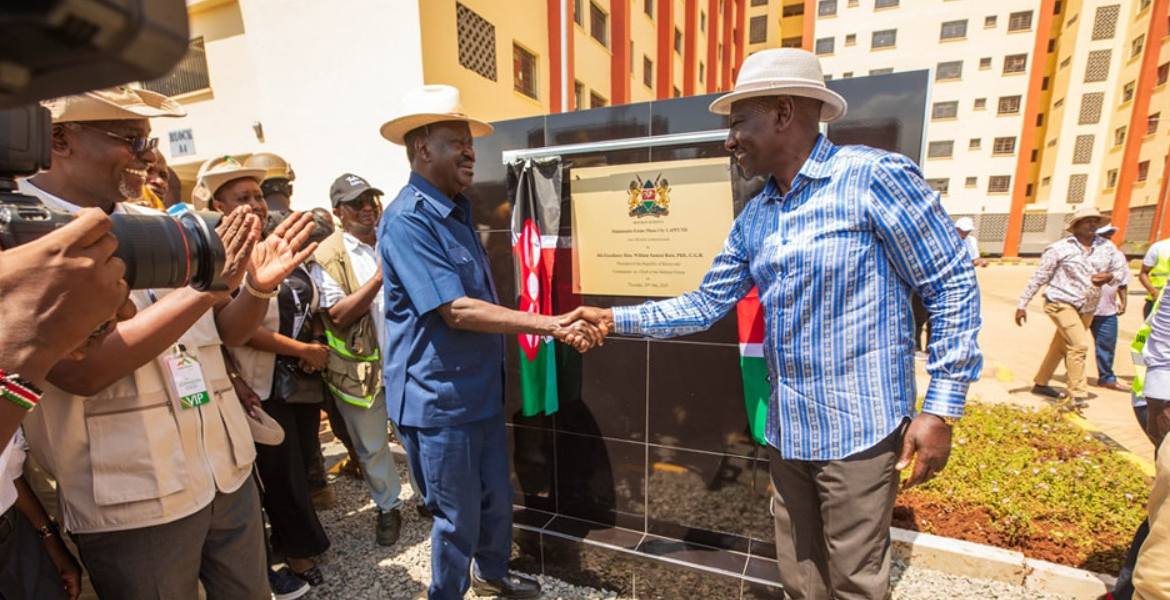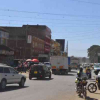Raila Odinga’s Land Donation Sparks Opposition in Kisumu

A Sh128 billion real estate development in Kisumu County is facing staunch opposition from local community members who allege unlawful appropriation of ancestral land and insufficient environmental safeguards.
The LV Marina housing project, spearheaded by GulfCap Real Estate, has ignited tensions between developers, local residents, and government officials, raising critical questions about land ownership, economic justice, and environmental sustainability in Kenya's development trajectory. The immediate flashpoint is a 285-acre parcel of land that formerly housed the defunct Kisumu molasses plant.
Community members from the Korando and Kogony clans contend that this land, initially acquired by the government in the 1970s for industrial development, should have been returned to them following the failure of the molasses venture. The situation escalated after former Prime Minister Raila Odinga, long associated with the site, announced the donation of five acres to support Kenya's affordable housing program, a gesture that has been interpreted by some residents as an illegitimate act.
George Weda, Secretary-General of the Kisumu Welfare Association, has vocally condemned Raila's actions, asserting that he lacks the authority to donate land rightfully belonging to the community.
"This was an unjust seizure that dates back to 1979 when the government took our land for the molasses project. Once that initiative failed, it should have been given back to us," Weda said, reflecting the community's deep-seated grievances.
The roots of the land dispute trace back to the 1970s when then Foreign Affairs Minister Dr. Robert Ouko acquired the land under the Land Trust Act (Cap 288) for the Kenya Chemical and Food Corporation. The land was intended to be held in trust for the local community, with promises of job creation and economic advancement. However, these promises went unfulfilled, and the project became inactive by the 1980s.
Further complicating matters, the Odinga family reportedly acquired the assets of the molasses plant in a public auction during the 1990s. Community members insist that while the plant's machinery was part of the auction, the land itself remained under their ownership.
"It was the plant that was auctioned, not the land," Weda reiterates.
The Kisumu Welfare Association says that their formal requests for community engagement and transparency regarding the project's impact were ignored by developers. As the project progresses, residents are demanding a thorough Environmental Impact Assessment to evaluate the potential ecological consequences of the LV Marina project, given its proximity to Lake Victoria.
Concerns are mounting that inadequate waste management could lead to pollution, endangering biodiversity and public health. Professor Enos Okolo, Chairperson of the Association, warns about the long-term consequences of inadequate environmental protections.
"This is a fragile ecosystem, one mistake could lead to irreversible damage," he cautions.
The community's demands include the conducting of an environmental assessment, the implementation of meaningful engagement, fair compensation for displaced farmers, and a transparent land ownership audit. The effects of land displacement are already being felt by local farmers, with reports of bulldozers destroying crops and disrupting livelihoods. Samuel Onyango, a farmer who has cultivated the land for over two decades, recounts the shock of losing his crops without warning or compensation.
"I paid my school fees from our maize harvest. Then one morning, everything was flattened. No warning, no compensation," he laments.
Raila, who launched the LV Marina project in January, has defended the development as the optimal use for the land after the failure of the molasses venture. He expresses confidence in the project's viability and its potential to address regional housing shortages.
"After discussions with my brother Shahbal, we agreed this was the ideal solution for Kisumu," he stated, referring to businessman Suleiman Shahbal, a key partner in the initiative.
Tracing the origins of the Kisumu molasses plant, Raila explained that it was initially conceived in the 1970s amid a global energy crisis. The government aimed to produce ethanol from sugar by-products to blend with petrol, reducing dependence on costly oil imports. However, as oil prices stabilized, the project lost momentum. Raila asserted that his family lawfully acquired the dormant facility in the 1990s after placing the highest bid in a government auction.
"We won the bid fair and square. Yet officials claimed only the assets, not the land, were for sale. But what use are buildings without the land they stand on?" he questioned.
Skepticism persists about the project's affordability and benefits for the local population. Critics argue that the housing units may be financially out of reach for Kisumu's largely low-income residents, potentially exacerbating marginalization rather than promoting upliftment.








Add new comment